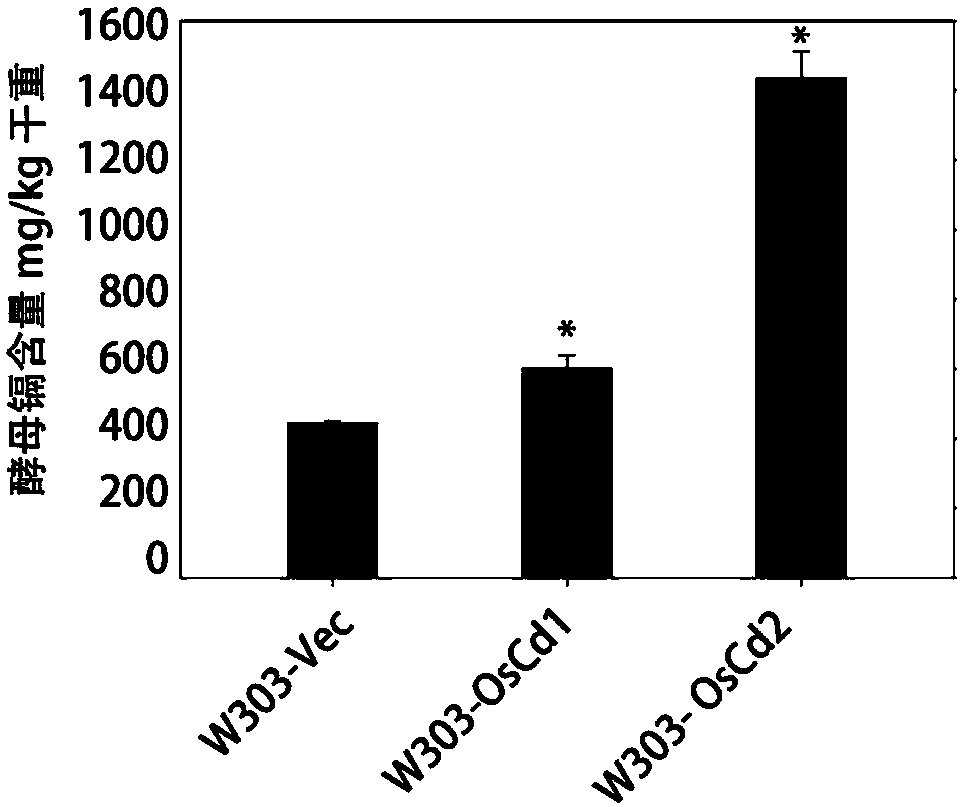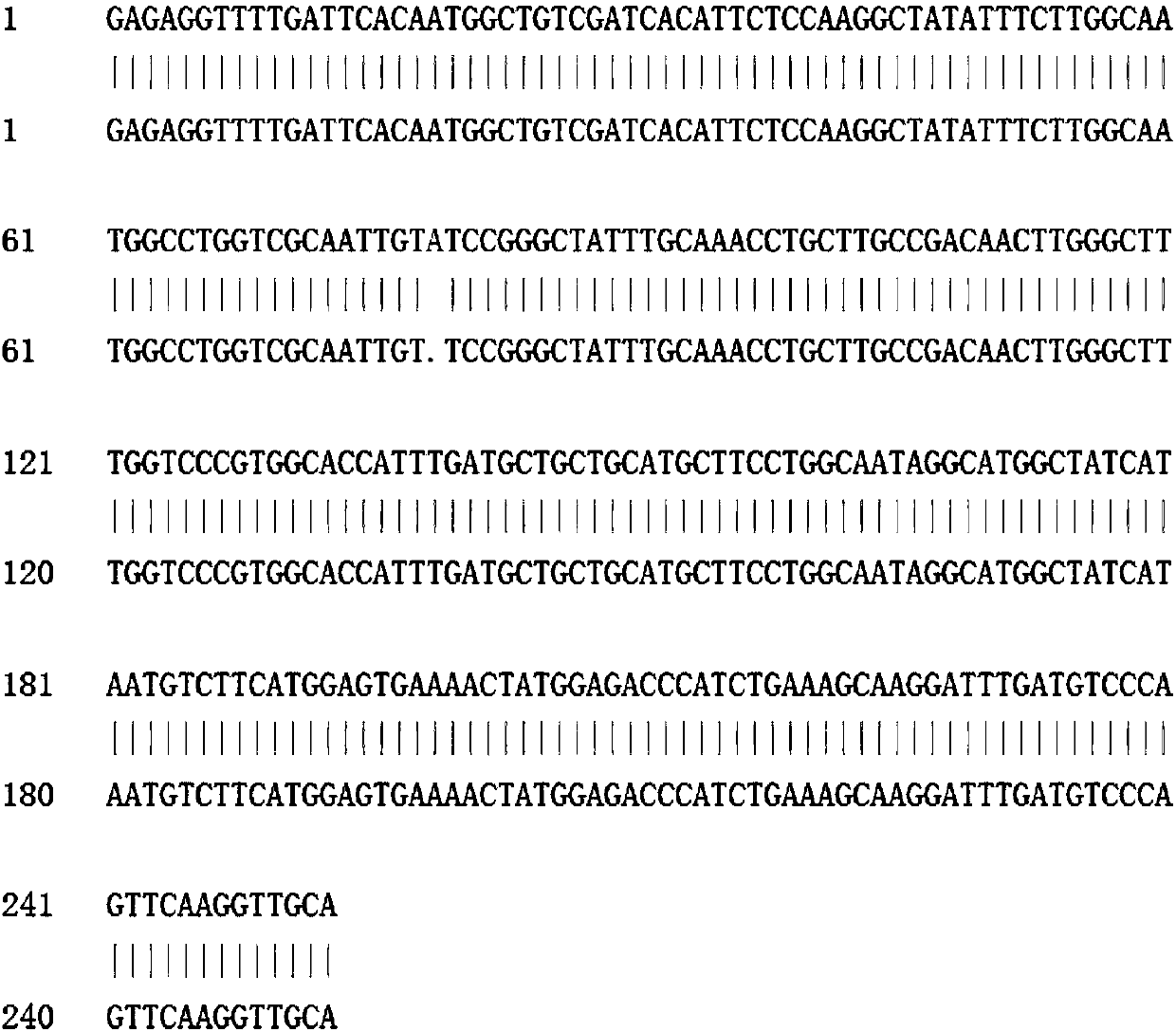Method for cultivating low-cadmium accumulated rice and use of related materials
A technology for rice accumulation, applied in chemical instruments and methods, botany equipment and methods, biochemical equipment and methods, etc., can solve the problems of no cadmium, cadmium reduction, etc.
- Summary
- Abstract
- Description
- Claims
- Application Information
AI Technical Summary
Problems solved by technology
Method used
Image
Examples
Embodiment 1
[0084] Example 1. OsCd1 / 2 is a cadmium accumulation-related protein and its application in regulating yeast cadmium accumulation
[0085] 1. Construction of yeast expression vector
[0086] A. Extract total RNA from rice Nipponbare and 9311 leaves respectively.
[0087] B. Reverse transcribe the total RNA extracted in step A into cDNA to obtain the cDNA of Nipponbare and the cDNA of 9311.
[0088] C. Using the cDNA of Nipponbare as a template, the primer pair composed of OsCd1S and OsCd1A was used for PCR amplification to obtain the PCR amplification product of OsCd1. OsCd1S: 5'-ATGGAGGTGTTCTACTACCT-3';
[0089] OsCd1A: 5'-TTAAGGATTCAGTGGCTCAT-3'.
[0090] Using the cDNA of 9311 as a template, PCR amplification was performed with the above-mentioned primer pair composed of OsCd1S and OsCd1A to obtain a PCR amplification product of OsCd2.
[0091] D. Using the PCR amplification product of OsCd1 as a template, a primer pair composed of OsCd1S1 and OsCd1A1 was used to obtain ...
Embodiment 2
[0107] Embodiment 2, cultivate low cadmium accumulation rice
[0108] 1. Creation of OsCd1 knockout rice based on CRISPR / Cas9 technology
[0109] 1. Construction of sgRNA expression vector
[0110] Design of single guide RNA (single guide RNA) target sequence According to the genome sequence of the rice cadmium transporter OsCd1, three sgRNAs targeting OsLCd1 were designed, and their names were CR-1, CR-2 and CR-3. The designed gRNA target sequence was compared with the rice genome sequence to exclude non-specific target sites. The nucleotide sequence of CR-1 is 5'-GCCUGGUCGCAAUUGUAUCC-3', targeting the 527-546th position (target site sequence) of SEQ ID No.1 of OsCd1 gene; the nucleotide sequence of CR-2 is 5'-CUUCUCGGCGUUCGAGUCA-3', targeting the 423-441th (target site sequence) of SEQ ID No.1 of the OsCd1 gene; the nucleotide sequence of CR-3 is 5'-CAAGCACUCCCCCCGAGUAC-3', targeting Positions 354-372 (target site sequence) of SEQ ID No. 1 of the OsCd1 gene.
[0111] Use...
PUM
 Login to View More
Login to View More Abstract
Description
Claims
Application Information
 Login to View More
Login to View More - R&D
- Intellectual Property
- Life Sciences
- Materials
- Tech Scout
- Unparalleled Data Quality
- Higher Quality Content
- 60% Fewer Hallucinations
Browse by: Latest US Patents, China's latest patents, Technical Efficacy Thesaurus, Application Domain, Technology Topic, Popular Technical Reports.
© 2025 PatSnap. All rights reserved.Legal|Privacy policy|Modern Slavery Act Transparency Statement|Sitemap|About US| Contact US: help@patsnap.com



